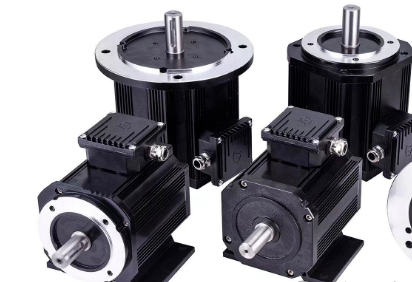Dc motor is a kind of motor that uses DC power supply, and its working principle is based on the magnetic effect of current and the effect of magnetic field on current. When the DC power supply provides electrical energy to the motor through the brush and commutator, a constant magnetic field is generated between the stator and rotor of the motor. This magnetic field interacts with the current on the rotor to create torque, which causes the motor to spin.

variable voltage speed regulation
How it works:
Variable voltage speed regulation is to adjust the speed of the DC motor by changing the voltage applied to the armature. A DC power supply and a reactor or thyristor circuit are usually used to regulate the voltage.
Advantages:
Simple: The control circuit is relatively simple and easy to implement.
Low cost: no complex control equipment is required.
Good thermal performance: When the motor runs at a lower voltage, the loss is low and the thermal effect is small.
Disadvantages:
Lower efficiency: Lower efficiency at partial loads due to the presence of a fixed pressure drop.
Torque fluctuations: In some applications, torque fluctuations may be caused.
Limited range of speed control: Limited range of voltage variation, resulting in limited range of speed control.
Variable frequency speed regulation
How it works:
Variable frequency speed regulation is to adjust the speed of the motor by changing the frequency of the power supply of the DC motor. This is usually achieved by using a frequency converter, which converts fixed-frequency alternating current into variable-frequency alternating current, which is then converted into variable-frequency direct current by a rectifier.
Advantages:
High efficiency: High efficiency over the entire speed range.
Wide speed range: can achieve a wide range of speed adjustment.
Smooth speed regulation: Provides smooth and stepless speed regulation.
Good dynamic response: Fast response to load changes.
Disadvantages:
High cost: High cost of frequency converter and its control circuit.
Complexity: The control system is more complex than variable voltage speed regulation.
Possible electromagnetic interference: The frequency converter may produce electromagnetic interference.
Chopper speed regulation
How it works:
Chopper speed regulation is to control the motor speed by adjusting the pulse width (PWM) of the DC power supply. The chopper switches the power supply on and off during each cycle, adjusting the RMS value of the armature voltage.
Advantages:
High efficiency: Low loss of chopper, high efficiency throughout the speed range.
Precise control: Very precise speed control can be achieved.
Good thermal performance: Due to high efficiency, the thermal effect is small.
Regenerative braking: Easy to achieve regenerative braking of the motor.
Disadvantages:
Cost and complexity: Choppers and their control circuits can be expensive and complex.
Electromagnetic interference: Chopper operation may produce electromagnetic interference.
Requirements for motors: Some types of DC motors may not be suitable for using chopper speed regulation.
Post time: Jun-06-2024

